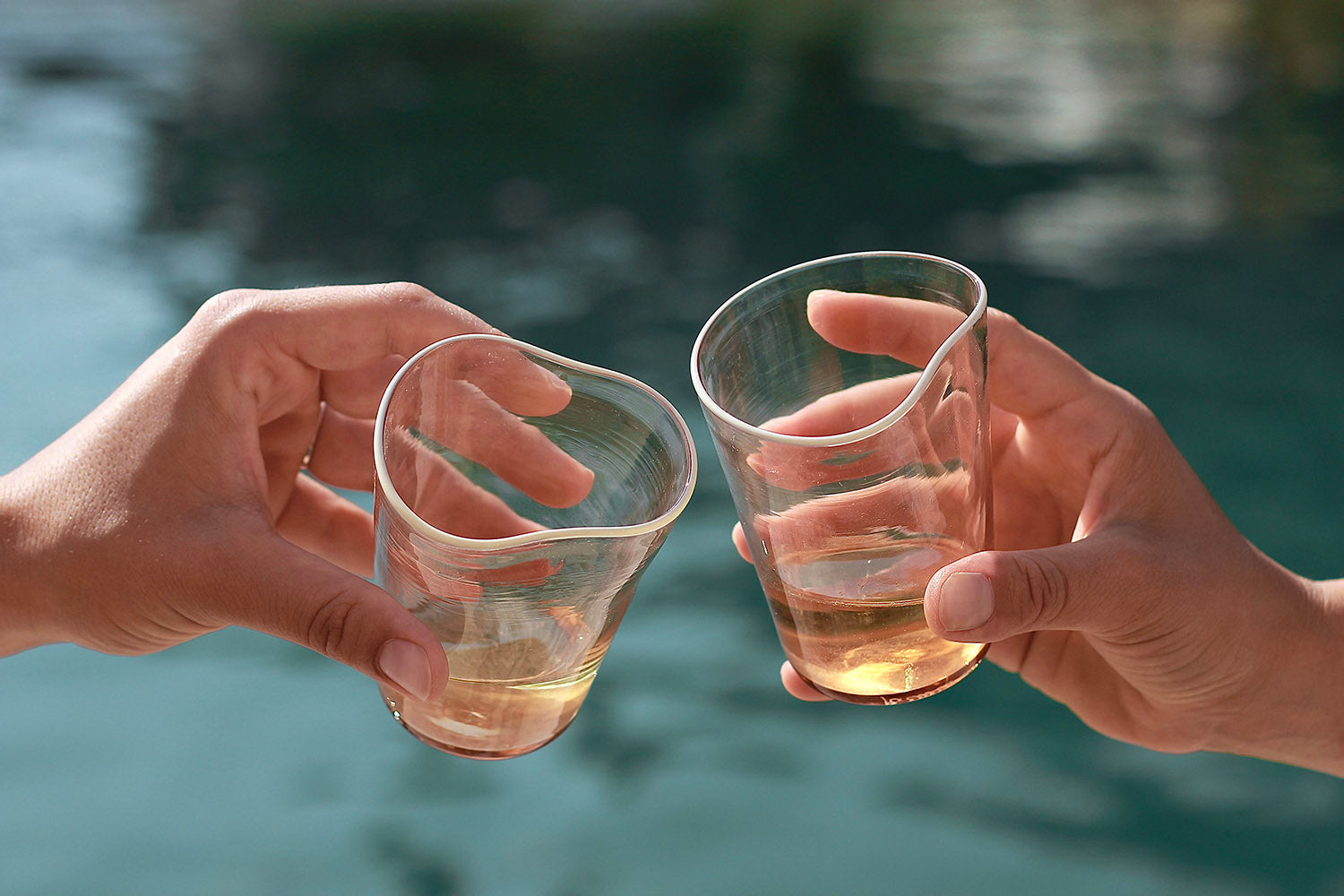Since the beginning of Micheluzzi Glass we have extensively explored the cold carving technique and from the start this process has defined our style.
If you are curious to know more about this technique, you should ready this new page of our diary. We will tell you how we started adopting it for our vases and how it became the style signifier of our glass collection.
If you are curious to know more about this technique, you should ready this new page of our diary. We will tell you how we started adopting it for our vases and how it became the style signifier of our glass collection.

Molatura, in the glass world is the term we use to refer to the cold carving technique. It takes its name from the grinding wheel used to carve the cold glass, which is called "Mola" in Italian. Usually, the Molatura is a process mainly used during the finishing phase to get rid of the glass's cutting edges but also employed for decorative purposes to alter the surface of glass and create different effects. Even though we are certainly not the first and the only ones that use this technique for decorative purposes, the Molatura is, without any doubt, one of our most iconic decorative tools. Before we tell you more about how we use this technique, you might be interested in knowing how we started using this technique and how it became one of our main distinctive traits of our glass collection.

As we will see in a moment, this technique is perhaps the one that gives you the widest array of possibilities for producing different visual and tactile effects. Therefore, making our first steps in the process of glass making we chose to adopt it as our primary decorative technique since it is the one that allowed us to make the most out of classic and less complex forms. And thanks to this technique, we were able to carry on our journey of research and experimentation, and, as we went on, a horizon in constant expansion of different creative possibilities opened up. The first thing to know is that we couldn't use the Molatura if our glass weren't so thick. This glass characteristic is imperative because it's this very same thickness that allows us to "dig" so deeply into the glass.

But let's go back for a second to the definition of this technique: Molatura is the operation of grinding, smoothing or polishing various materials using a grinding wheel. Basically, the finished cold glass is carved thanks to a grinding diamond wheel, pressed very gently on the spinning wheel that shapes it appearance. Such a wheel spins at high speed, and it almost seems like she is feeding herself with the glass. In order to avoid damaging the glass, the wheel is constantly bedewed with a stream of water that cools the temperature.

This procedure is one of the few "cold" ones and, for this reason, is made when the glass is already gone out from the furnace. Depending on the wheel used, the pressure applied, and the movements adopted, from the same kind of glass, we can obtain a large spectrum of totally different finished ones. So, since it is an extremely versatile and adaptable technique, we use it in many different ways, creating objects that, at first glance, don't even seem to have been made with the same process. We can create different carvings: one thinner, one larger, one regular, one irregular, one stretched, one rounded, and so on… Such technique changes both the shape and consistency of the glass, and the different carvings make the tactile experience one of a kind.

When you see a glass made with this technique, it almost feels like that it's inviting you to touch its "skin". But, more importantly, the Molatura drastically changes the color perception since it allows the light to play with the glass surfaces, reflecting colors in a unique way.
We hope you enjoyed reading this new page of our diary and if you want to see more pieces made with this technique check out our Online Shop



Leave a comment
This site is protected by hCaptcha and the hCaptcha Privacy Policy and Terms of Service apply.